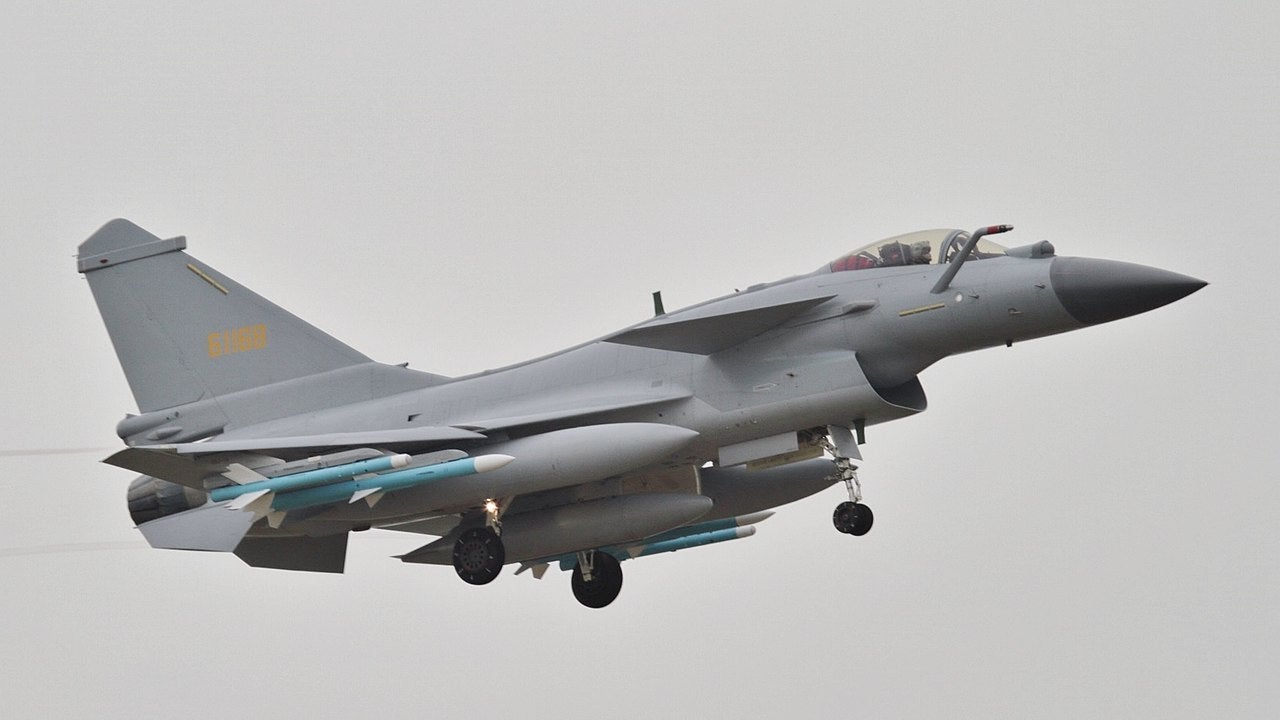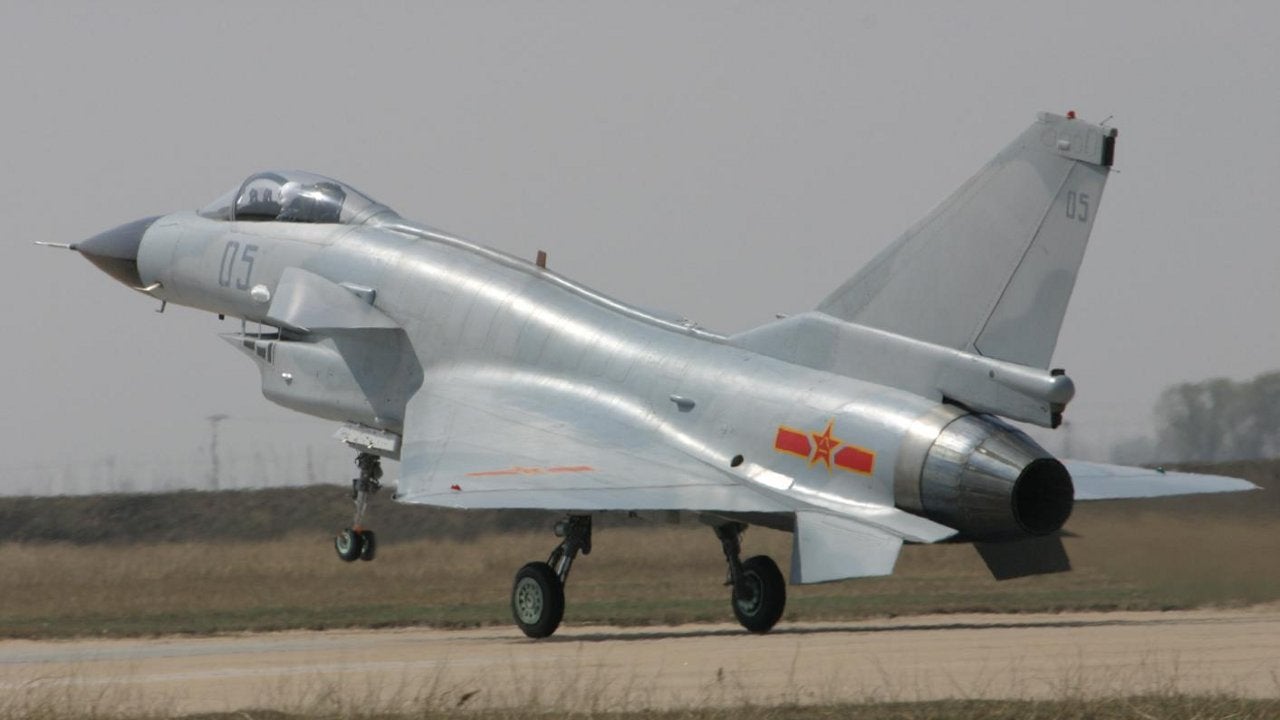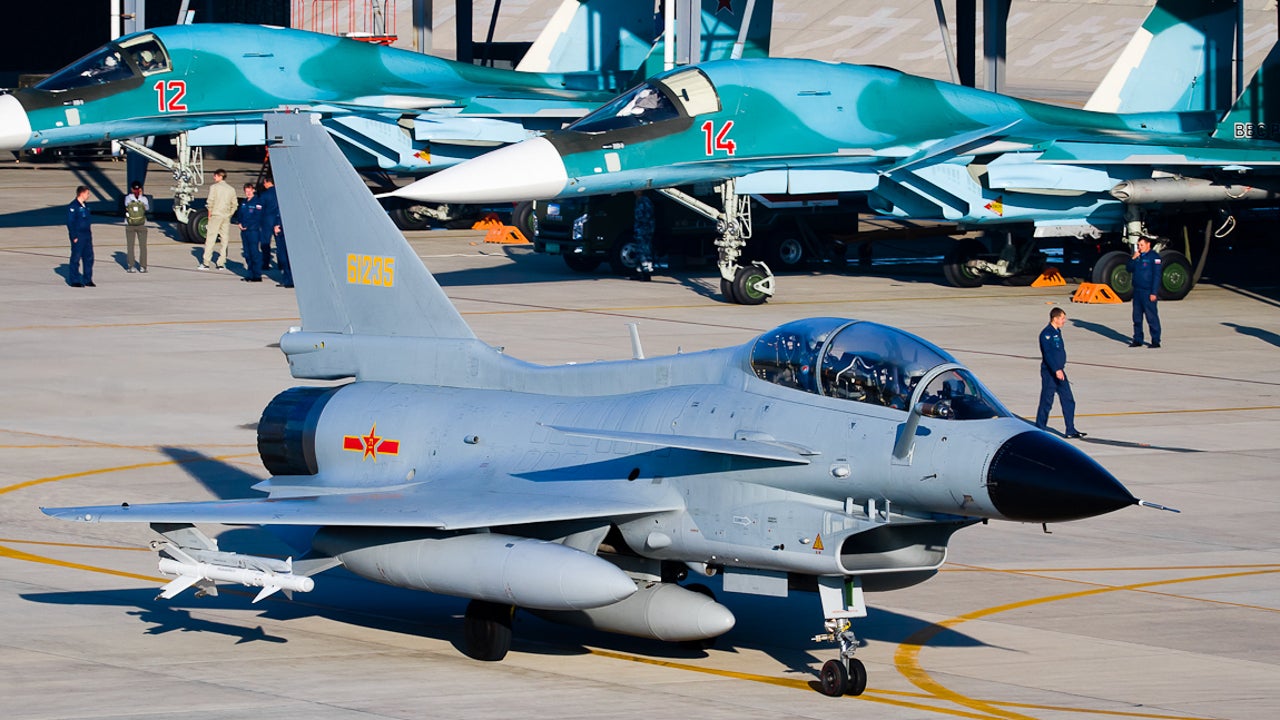The J-10 (Jian 10 or Fighter 10) is China’s indigenously built multirole fighter aircraft developed by the Chengdu Aircraft Industry. Chengdu Aircraft Industry is part of the China Aviation Industry Corporation I (AVIC I). In the West the J-10 aircraft is known as the Vigorous Dragon.
China’s People’s Liberation Army (PLA) includes the army, navy, air force and strategic rocket force. The J-10 aircraft is considered the replacement for the J-7 and Q-5.
J-10 multirole fighter development
China formally announced the J-10 in February 2007. The existence of the J-10 was first reported in 1994, but the J-10 programme was started in 1988 and the first flight of the single seat aircraft took place in 1998. A two-seater variant made its first flight in 2003.
There are reports that the J-10 entered service in 2005 and is operational in single seater and two seater versions in at least two PLA air force squadrons.
The first native fourth-generation J-10 aircraft was unveiled by the air force in April 2010. Four J-10 fighter jets were showcased by the 24th fighter division of AFPLA. China and Pakistan have worked closely on the development of another fighter aircraft, the JF-17 or FC-1 light fighter aircraft.
J-10B, an upgraded version of J-10, made its public debut in 2016. It features aerial refuelling capability, thrust vector control technology and has longer nose radome for accommodating an AESA radar system.
J-10C, the latest variant of J-10, was inducted into the PLA service in April 2018.
J-10 design
The structure of the aircraft was based on a tail-less delta (triangular planform) wing, foreplanes and a sweptback vertical tail. There are two fixed, outwardly canted ventral (on the underside of the body) fins near the tail. The size and design of the J-10 are very similar to that of the Israeli Aircraft Industries Lavi fighter aircraft, which itself is similar to and derived technology from the USAF F-16 aircraft.
The horizontal close-coupled foreplanes (larger than those on the Lavi) on the forward fuselage improve the take-off and low-speed handling characteristics.
Weapons
The J-10 has 11 external hardpoints: five hardpoints on the fuselage with one on the centreline and a pair of hardpoints on each side of the fuselage, and three hardpoints on each wing.
The outer wing stations carry air-to-air missiles such as the Chinese built Python 3 PL-8, P-11 or PL-12 or the Russian Vympel R-73 (AA-11 Archer) or R-77 (AA-12 Adder).
The PL-8 infrared homing short-range air-to-air missile, a variant of the Israeli Python 3 missile, was manufactured in China under a licensed production agreement by the China Academy (formerly the Luoyang Electro-optics Technology Development Centre). The PL-11 is a licensed-manufactured variant of the MBDA Italy Aspide medium-range air-to-air missile.
The PL-12 missile was manufactured in China under a collaborative agreement with Russia. It uses the Russian AA-12 Adder missile technology configured with a Chinese-developed rocket motor to give a range of 50 miles and speed of Mach 4.
The aircraft can be armed with laser-guided bombs, the anti-ship YJ-8K or C-801K solid rocket powered missiles, the C-802 land attack and anti-ship turbojet-powered missiles manufactured by CHETA, and the YJ-9 anti-radiation missile.
A 23mm cannon is installed internally on the port side of the forward section of the fuselage above the nosewheel.
Sensors on-board J-10 fighter aircraft
The aircraft can be fitted with a forward-looking infrared and laser target designator pod, which supports deployment of laser and satellite navigation guided weapons.
Possible pulse Doppler radar fits include the Chinese Type 1473 radar, Russian Phazotron Zhuk-10PD or Zhemchug, the Chinese JL-10A, the Israeli IAI Elta EL/M-2023 or the Italian Galileo Avionica Grifo 2000.
Cockpit
The single-seat fighter aircraft was developed in a two-seat variant as a trainer aircraft and as an electronic warfare aircraft with a zero-zero ejection seat in its cockpit. The first flight of the two-seat variant was completed in 2003.
The aircraft has a digital fly-by-wire flight control system and HOTAS (hands-on throttle and stick) control on which the pilot has every control for combat incorporated into the two handholds.
Cockpit displays include a helmet-mounted weapon sight, a wide field of view head-up display and one full-colour and two monochrome liquid crystal multifunction displays. The avionics are served by a 1553B databus.
Engine
The J-10 fighter aircraft is powered by the AL-31 turbojet engine supplied by Saturn Lyulka. The prototype aircraft and the first series of production aircraft are fitted with the AL-31FN developing 79kN and 123kN with afterburn, and which is the currently used in the Chinese Air Force Su-27 and Su-30 aircraft.
The more highly powered and advanced variant of the J-10, the Super-10, first reported in 2006, is fitted with the AL-31FN M1 supplied by Salyut. The AL-31FN M1 provides 132.5kN and is equipped with full authority digital engine control and a four-way swivelling exhaust nozzle for vectored thrust.
The aircraft carries a maximum of 4,950l of fuel internally, comprising 3,180l in the wing tanks and 1,770l in the fuselage tanks. A fixed refuelling probe for in-flight refuelling is installed halfway up the forward port side of the fuselage and just forward of the pilot.
Aerial refuelling of the J-10 is from a Xian H-6U tanker aircraft. Additional fuel can be carried in auxiliary tanks on the centreline under the fuselage and on the innermost pair of the three sets of wing hardpoints.
Landing gear
The aircraft is equipped with tricycle-type landing gear. The nose unit has twin heels and retracts rearwards and the main units retract forward. The aircraft has a drogue parachute for landing.
J-10 aircraft performance
The J-10 can fly at a maximum speed of 2,327km/h at high altitudes and has service ceiling of 18,000m. The range and combat radius of the aircraft are 1,850km and 550km respectively. The aircraft weighs around 9,750kg and has a maximum take-off weight of 19,277kg.




